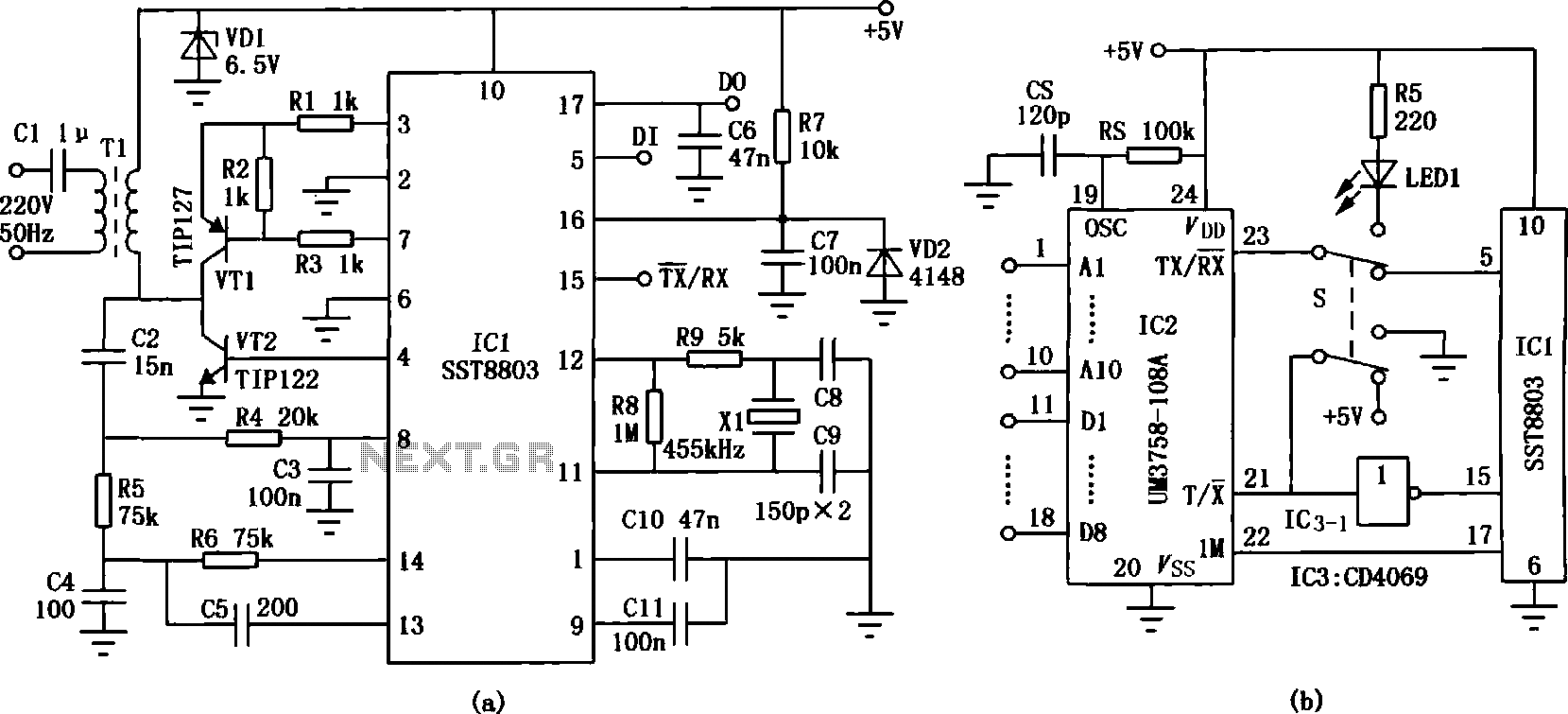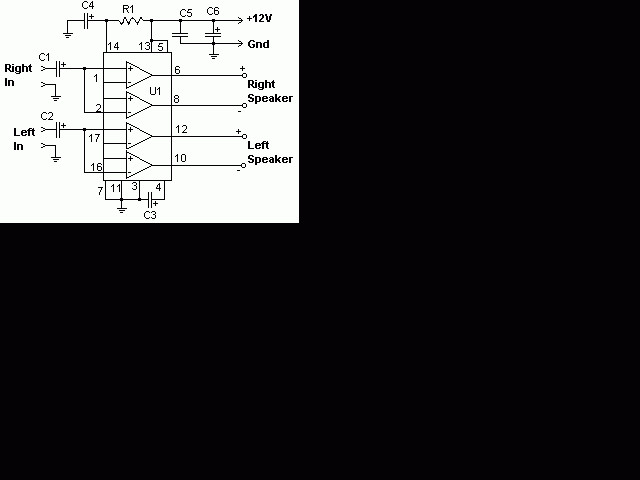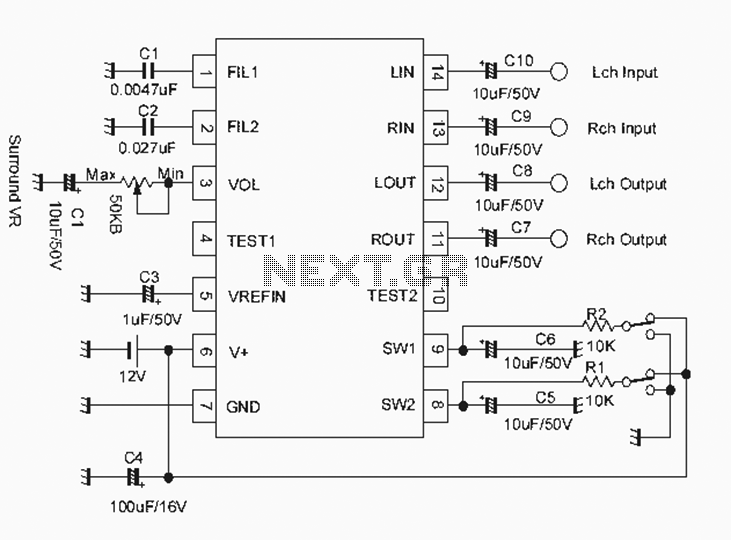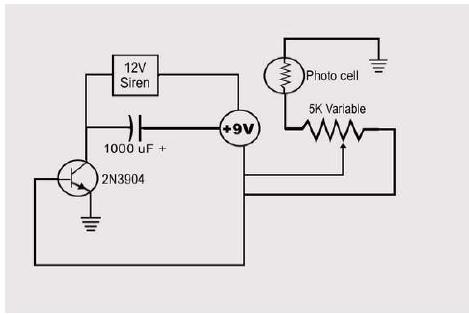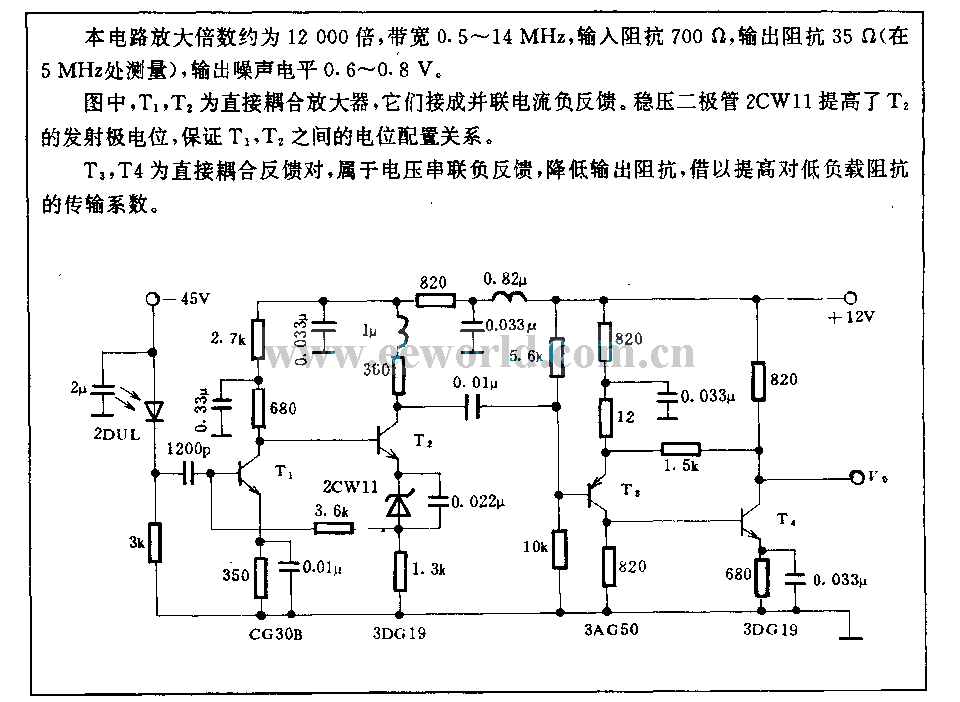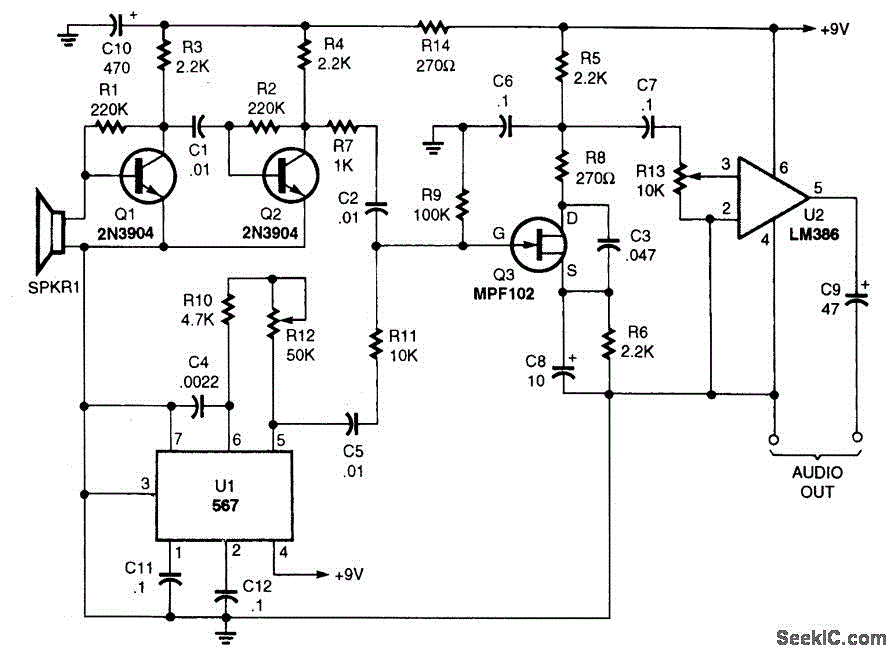
Infrared receiver circuit
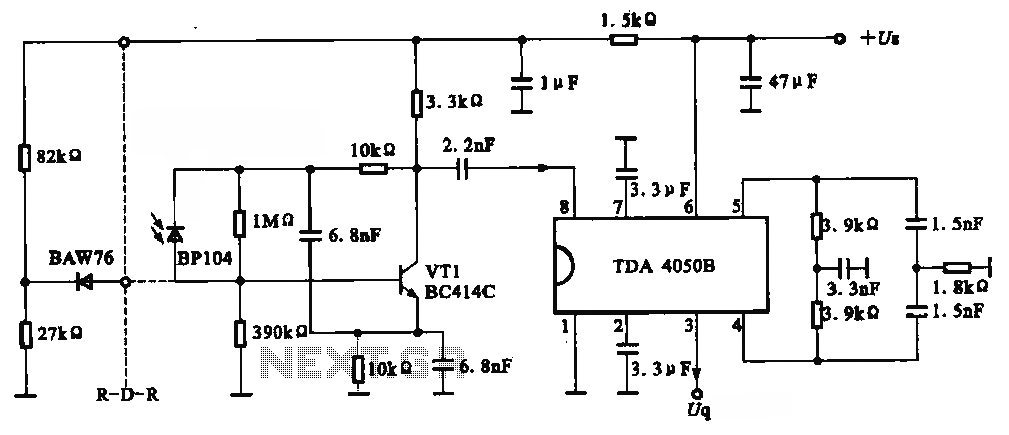
The circuit depicted is an infrared receiver circuit. It primarily consists of an infrared remote control signal switching circuit, designated as VRI, along with signal amplification, filtering, and rectifying integrated circuits, specifically the TDA4050B. The BP104 component serves as an infrared photodiode that detects infrared signals emitted by an infrared diode. The BP104 converts the optical signal into a current signal, which is subsequently amplified by the transistor VT1. This amplified signal is then sent to the pin of the TDA4050B integrated circuit, where the remote control signal is amplified, filtered, shaped, and finally output through the designated pins for remote control signals.
The infrared receiver circuit functions by utilizing a series of key components to effectively capture and process remote control signals. The BP104 photodiode is crucial for detecting infrared light emitted by remote control devices. When the infrared light strikes the photodiode, it generates a small current proportional to the intensity of the incoming light. This current is then amplified by the transistor VT1, which increases the signal strength to a level suitable for further processing.
The TDA4050B integrated circuit plays a significant role in the signal processing chain. It is designed to amplify the received signal, filter out noise, and shape it for accurate output. The integrated circuit's architecture includes various stages that ensure the signal integrity is maintained throughout the processing. After amplification and filtering, the shaped output signal is available at specific pins of the TDA4050B, which can then be connected to other components or systems for further use, such as controlling devices or systems based on the remote control input.
This circuit can be utilized in various applications where remote control functionality is required, such as in televisions, audio systems, and other consumer electronics. The design emphasizes reliability and performance, ensuring that the remote control signals are accurately received and processed, allowing for seamless user interaction with electronic devices.Shown as an infrared receiver circuit. The figure shows that the circuit is mainly composed of an infrared remote control signal switching circuit vri and signal amplification, filtering and rectifying integrated circuits TDA4 () 50B and other parts of. BP104 sense infrared photodiode infrared diode emitting an optical signal, BP104 will optical signal into a current signal, the signal after amplification by VT1 is fed TDA4050B pin, the remote control signal received by the integrated circuit amplifies, filters after shaping and output by the remote control signal feet.
The infrared receiver circuit functions by utilizing a series of key components to effectively capture and process remote control signals. The BP104 photodiode is crucial for detecting infrared light emitted by remote control devices. When the infrared light strikes the photodiode, it generates a small current proportional to the intensity of the incoming light. This current is then amplified by the transistor VT1, which increases the signal strength to a level suitable for further processing.
The TDA4050B integrated circuit plays a significant role in the signal processing chain. It is designed to amplify the received signal, filter out noise, and shape it for accurate output. The integrated circuit's architecture includes various stages that ensure the signal integrity is maintained throughout the processing. After amplification and filtering, the shaped output signal is available at specific pins of the TDA4050B, which can then be connected to other components or systems for further use, such as controlling devices or systems based on the remote control input.
This circuit can be utilized in various applications where remote control functionality is required, such as in televisions, audio systems, and other consumer electronics. The design emphasizes reliability and performance, ensuring that the remote control signals are accurately received and processed, allowing for seamless user interaction with electronic devices.Shown as an infrared receiver circuit. The figure shows that the circuit is mainly composed of an infrared remote control signal switching circuit vri and signal amplification, filtering and rectifying integrated circuits TDA4 () 50B and other parts of. BP104 sense infrared photodiode infrared diode emitting an optical signal, BP104 will optical signal into a current signal, the signal after amplification by VT1 is fed TDA4050B pin, the remote control signal received by the integrated circuit amplifies, filters after shaping and output by the remote control signal feet.
